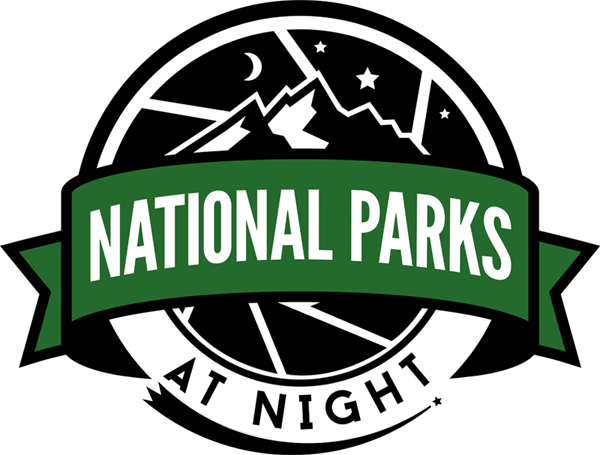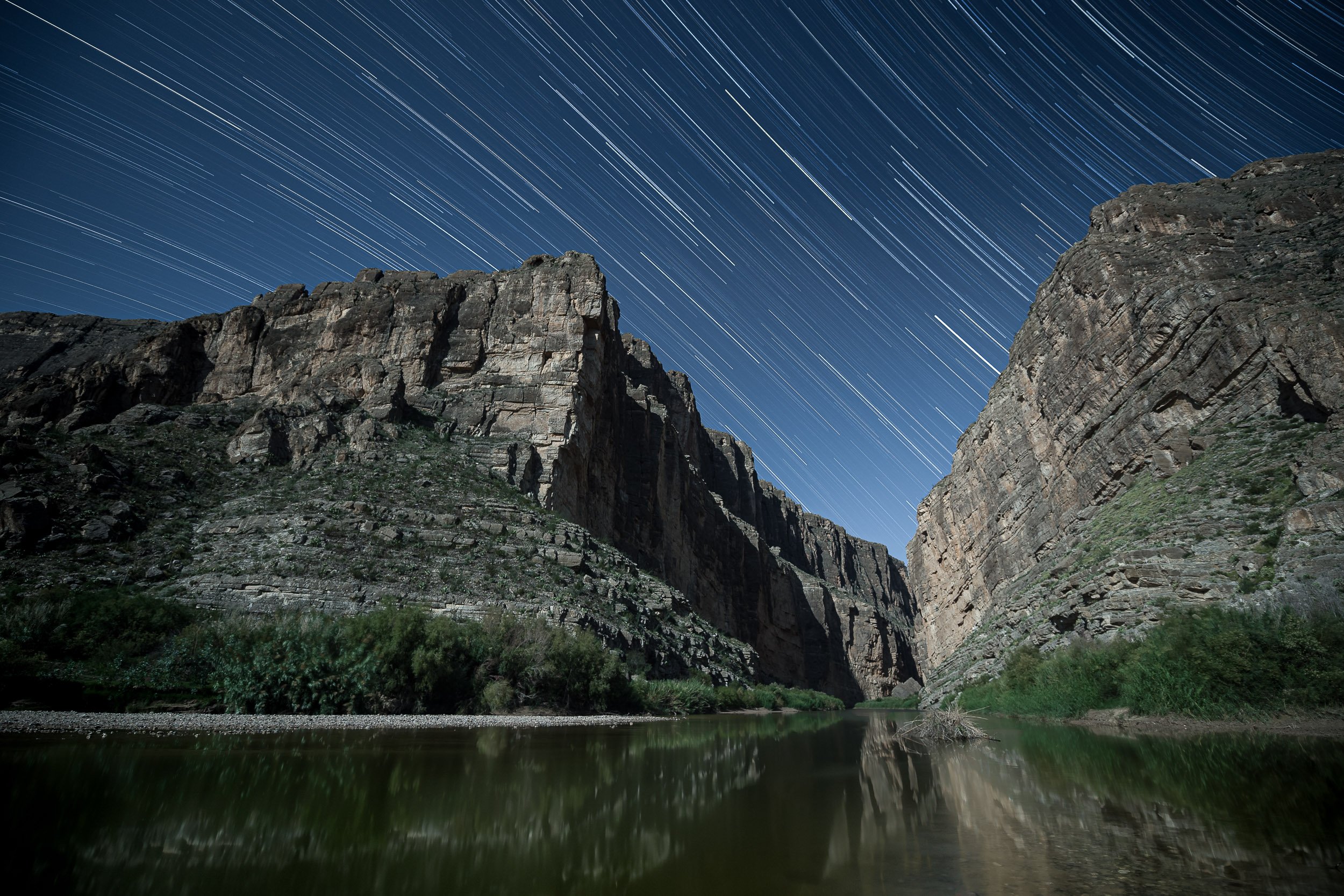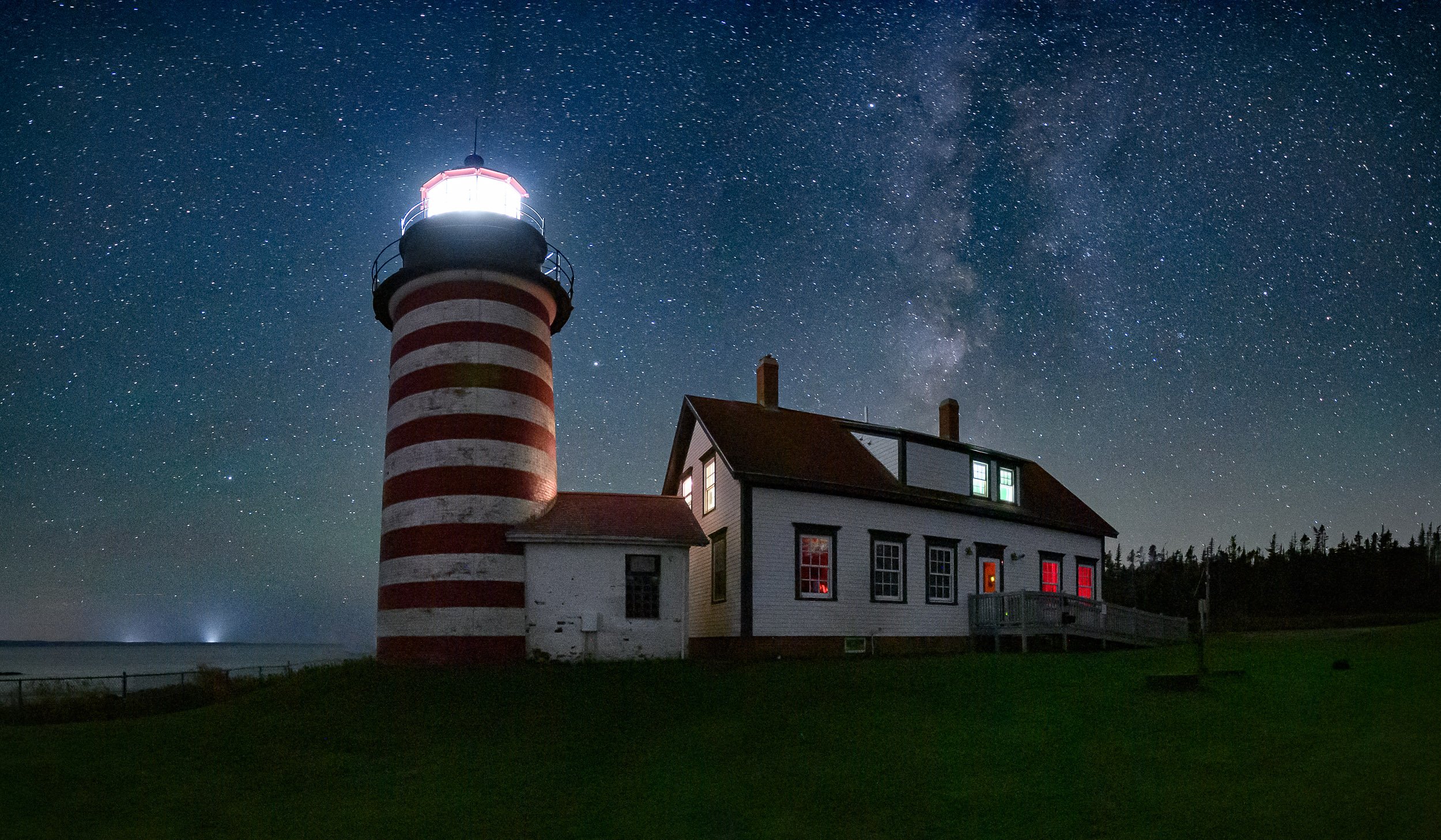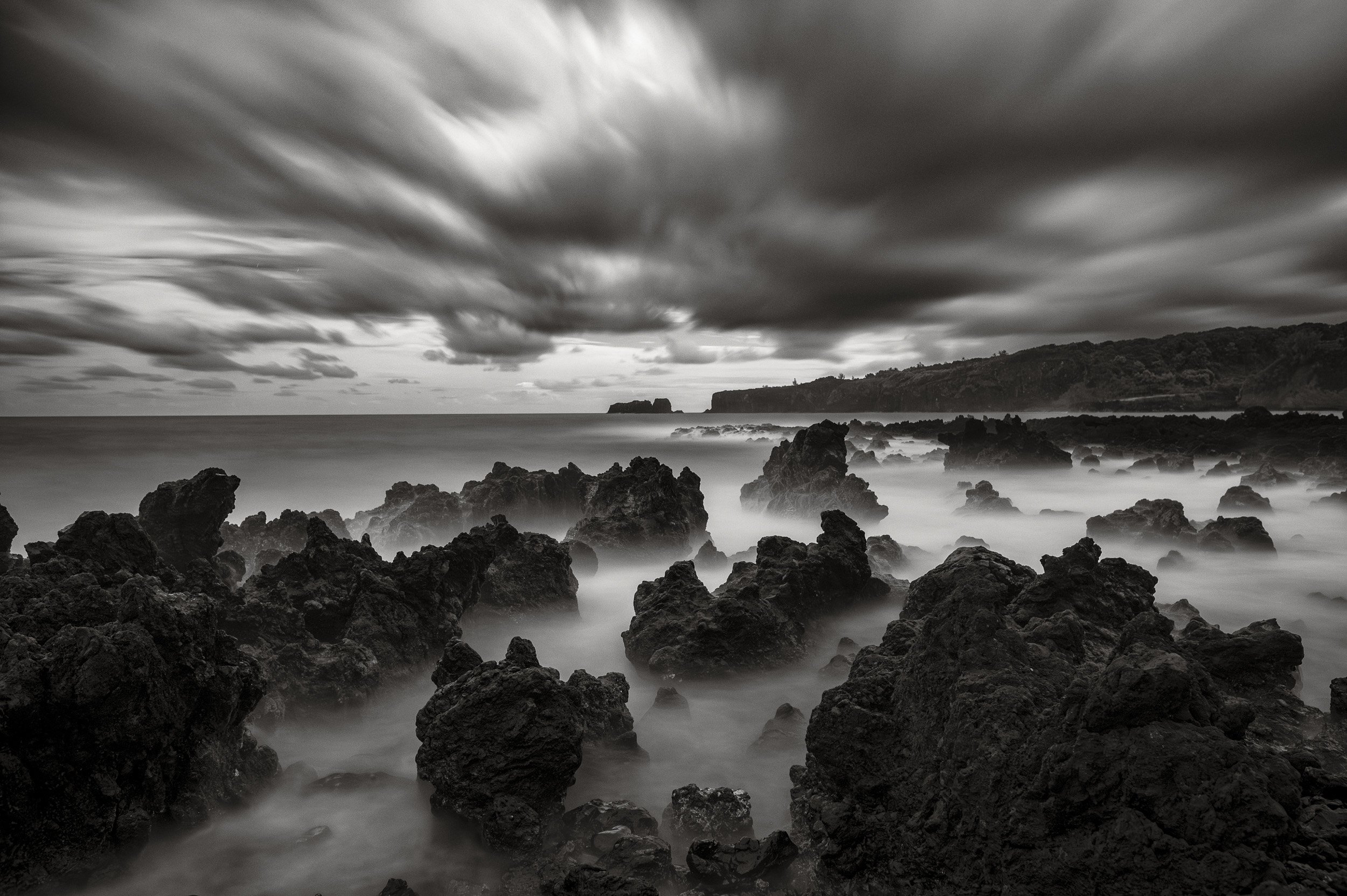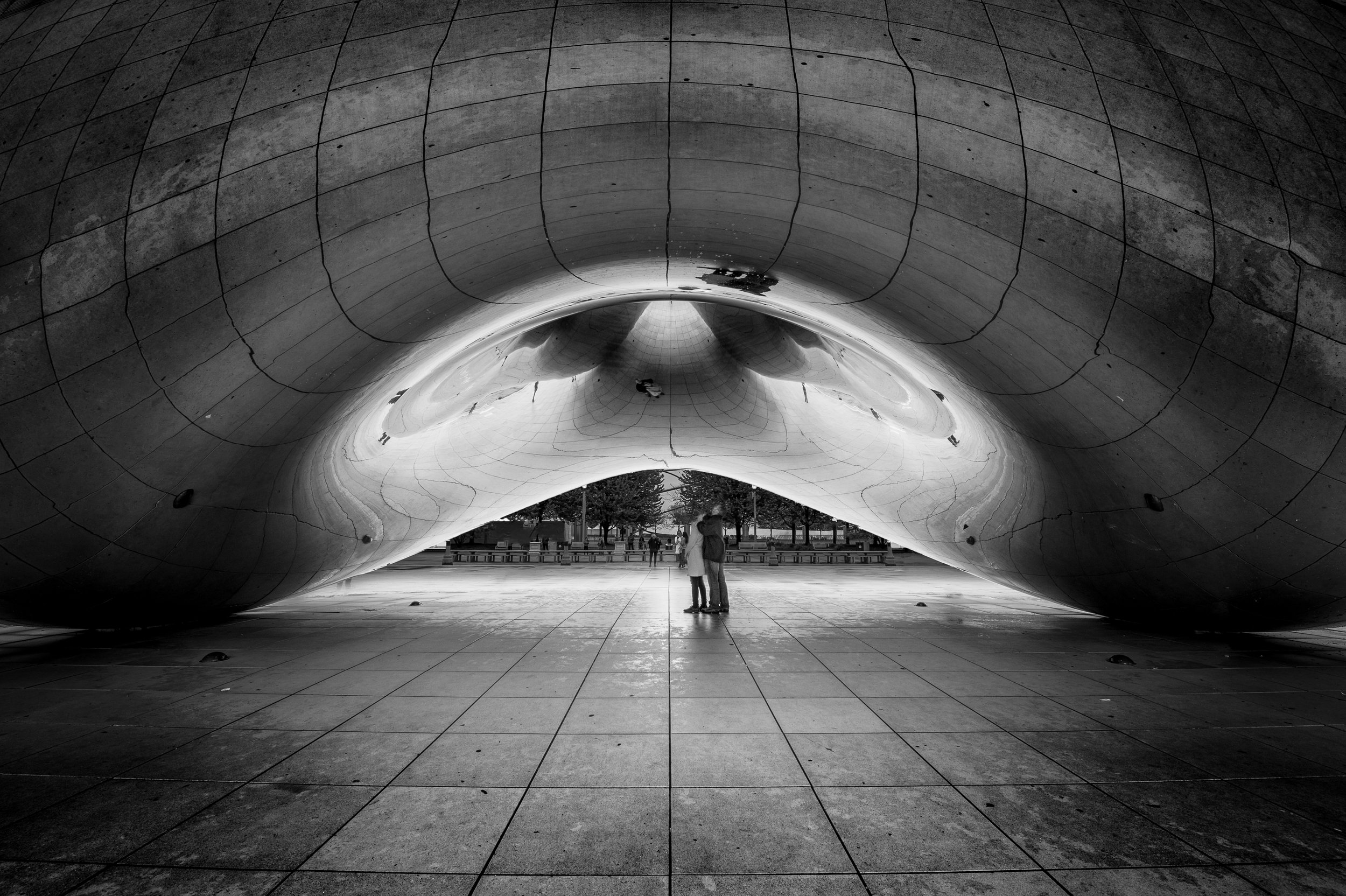From Plane to Rain to Desert Moon: The Great Lunar Eclipse Chase of 2025
It had been a while since we were last able to photograph a total lunar eclipse in the Americas—November 2022, to be exact. I missed shooting them, because I love shooting them.
I started chasing lunar eclipses in 2014 when I took a Dusk to Dawn workshop group to Las Vegas for the second in the tetrad of lunar eclipses that were happening over a one-year period. The next time was 2019, when I was in Atlanta and found a view of downtown with car trails and a big super blood moon.
High Roller & Lunar Moon Trail, 2014. 55mm focal length, 15 minutes f/8, ISO 400.
The 2019 super blood wolf moon (aka the lunar eclipse) over Atlanta. Foreground: 35mm lens, 25 seconds, f/16, ISO 200; background (moon): 600mm lens, 1/2 second, f/5.6, ISO 3200.
Lunar eclipses are relatively easy to shoot, compared to solar eclipses—you don’t need special filters and you typically have an hour of totality instead of mere minutes. Looking back recently, a common theme I noticed was that I had shot all my lunar eclipses in urban locations. So for the March 2025 eclipse last week, I wanted to travel someplace dark. Given that I would be in Vegas again right before this eclipse, I set my eyes on experiencing the event in the gold-tier dark skies of nearby Death Valley National Park.
The Players
As always is the case with night photography, I wanted to enjoy this experience with others. I was heading to Vegas for the WPPI conference, so it wasn’t hard to find friends who were willing to adventure together. The team comprised:
Susan Magnano, night photographer, luminescent portrait expert, Night Photo Summit speaker and birthday girl!
Clifford Pickett, post-processing wizard and educator in all things photography
JC Carey, master of bringing light and drama to any scene with his Westcott strobes always at the ready
The Plan
Death Valley is a vast national park with lots of scenery options. The idea I proposed was to photograph the hexagonal patterns of salt flats with mountains in the distance (like in the photo below) and the moon high in the sky.
Salt flat formations, Death Valley National Park. © Chris Nicholson. Nikon D5 with a Nikon 14-24mm f/2.8 lens. 1/320, f/8, ISO 100.
JC and I planned to fly in early on the 13th and head right to Death Valley. Susan and Cliff were already there and were able to do some key scouting for locations.
When JC and I landed, the weather was horrible. It was raining, totally overcast, windy and cold. But the forecast for Death Valley was that things would clear up about an hour before totality. That being said, Death Valley has different weather all over the massive park, so we kept our fingers crossed.
Another not-so-fun fact about Death Valley (depending on your priorities) is that it has very limited cell reception. Fortunately we got just enough of a sliver of service to learn that when Susan and Cliff scouted Badwater Basin—the usual spot for shooting salt patterns—they found nothing. Hurricane Hillary in 2023 and heavy rains in 2024 wiped out the formations (which is part of the normal cycle of nature there), and new ones had not completely reformed yet. So Susan and Cliff found another location with more defined patterns, and they sent us a pin.
The Shoot
Dropped pins work OK in Death Valley, as long as you have downloaded an offline map in Google Maps—which fortunately I had. We found Susan and Cliff after only one turnaround, when we spotted a lone car parked on the side of the road and a few tripods out in the darkness. We pulled over and called out “Susan, is that you?” A familiar voice called back, “You made it!” Finding your friends in the dark can be a very comforting feeling.
The sky was looking pretty good. There were still some big patchy clouds, but to the west were lots of stars. The air was a little chilly with winds approximately 10 mph, which was down significantly from the 50 mph winds earlier.
We started looking for primo honeycomb patterns that we could frame in front of the moon. By the time the clouds cleared, the eclipse was halfway toward totality. It looked very cool.
I had two setups going, but the main one was my Nikon Z 8 with a 14-24mm f/2.8 lens low to the ground to emphasize the raised lines of salt. I focused on the hyperfocal distance and was able to achieve sharp focus from 3 feet away to the stars at infinity.
Once totality kicked in and the moon turned dark red, I needed to home in on the proper exposure for the moon with detail. The correct foreground shot (Figure 1) was 8 seconds, f/2.8, ISO 6400. The properly exposed wide moon shot (Figure 2) was 1/2, f/4, ISO 1250. That is a five-plus-stop difference in exposure.
Figure 1. The foreground exposure. Nikon Z 8 with a Nikon Z 14-24mm f/2.8 lens. 8 seconds, f/2.8, ISO 6400.
Figure 2. The moon exposure. 1/2, f/4, ISO 1250.
I shot both frames at 18mm and later blended the properly exposed lunar eclipse with the foreground in Photoshop (Figure 3).
I shot a few different takes of this with different salt patterns, and I also used a Luxli Fiddle at .1 percent power to sidelight the scene and bring out the texture of the ground. However, for this foreground shot a car was driving down the road and the sidelight from the headlights provided the perfect visual punch to the salt flats.
Figure 3. The final blended image.
I also had my Nikon ZF camera mounted with a 100-400mm lens to get some close-up views of the eclipse during totality. I was inspired by Chris Nicholson’s bright star field capture of the lunar eclipse in 2022 and wanted to create something similar that as well.
The stars were really sparkling during totality and my proper lunar eclipse exposure (Figure 4) was 1/15, f/5.6, ISO 6400 shooting with the lens at 185mm. The sharp star field shot (Figure 5) was 1/2, f/5.6, ISO 25,600 also at 185mm.
Figure 4. Nikon ZF with a Nikon 100-400mm f/4.5-5.6 lens at 185mm. 1/15, f/5.6, ISO 6400.
Figure 5. 1/2, f/5.6, ISO 25,600.
What made blending these images together (Figure 6) easier than typical moon-swapping blends is that the glow around the moon was minimal because the moon was so dim.
Figure 6. The final blended image.
The Group Experience
It was very cool to experience the lunar eclipse in a dark location such as Death Valley. We were able to experience a variety of night photography opportunities due to the full-moon transition from a bright sky and landscape to an incredibly dark sky with stars aplenty, then back again, all within a few hours.
What I also found to be fun was that each of us were trying different interpretations of the lunar eclipse. JC’s favorite was a timelapse he set up that really shows the transition of the eclipse into totality.
© 2025 JC Carey.
Of course it wouldn’t be a night shoot with Susan if she didn’t bring out her light tubes and start taking luminescent portraits! That was super fun and a wonderful way to forever commemorate the Great Lunar Eclipse Chase of 2025.
© 2025 Susan Magnano.
© 2025 Susan Magnano.
Your Turn
We’d love to see your eclipse images and hear your eclipse stories! Share in the comments below, or on our Facebook page, or on Instagram (tag us @nationalparksatnight #nationalparksatnight #seizethenight).
If you didn’t get to shoot this lunar eclipse, another will hit the Americas on March 3, 2026. You’ll need to go west to see totality—in Alaska, Washington, Oregon, California and Canada. Bring friends. It’s the best way to enjoy and remember the experience!
